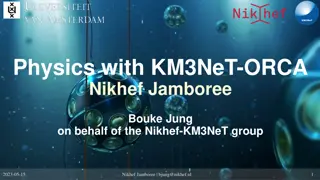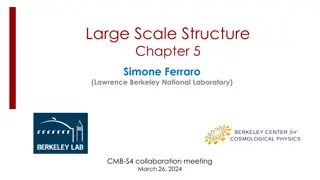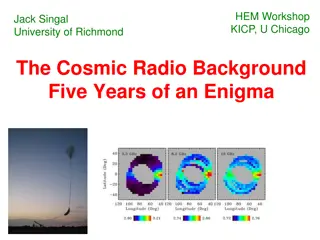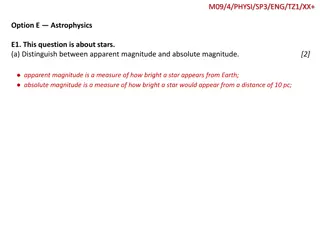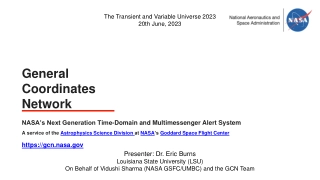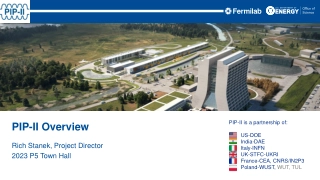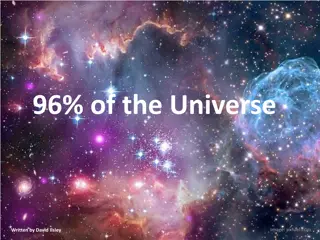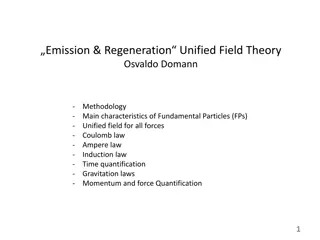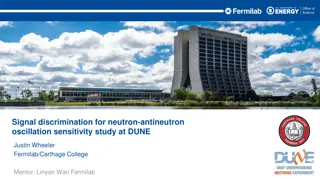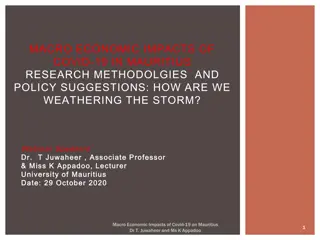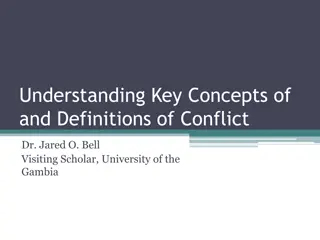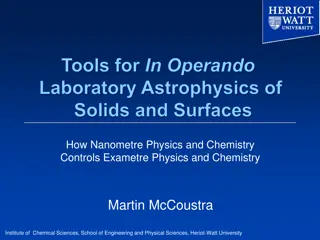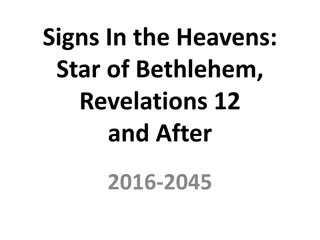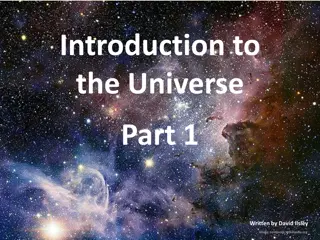Insight into Neutrinos: Impacts on the Universe's Cosmic History
Neutrinos, the lightest and most abundant massive particles in the Universe, play significant roles in cosmic evolution. Their effects on large-scale structure, constraints on mass, and implications for fundamental questions provide valuable insights into the Universe's past and future research directions.
Download Presentation

Please find below an Image/Link to download the presentation.
The content on the website is provided AS IS for your information and personal use only. It may not be sold, licensed, or shared on other websites without obtaining consent from the author. Download presentation by click this link. If you encounter any issues during the download, it is possible that the publisher has removed the file from their server.
E N D
Presentation Transcript
Neutrinos in the Universe Neutrinos are the lightest and most abundant massive particles in the Universe Neutrino abundance ~ 340/cm3 CMB photons ~ 410/cm3and baryons ~ 2.5 x10-7/cm3 Neutrinos have marked effects on the cosmic history of the Universe and can help answer outstanding questions: What is the neutrino mass scale and hierarchy? What is the total number of neutrino species (sterile neutrinos)? Complementary to accelerator, reactor and, 0v2 and decay endpoint experiments
Effect of Neutrino Mass on large scale structure Neutrinos free stream in the early Universe, smearing out over-dense regions and reducing growth of gravitational wells This produces a characteristic fall-off in the matter power spectrum, which is more marked on smaller scales CDM CDM + Neutrinos
Probes of large scale structure Direct measurement of structure using a tracer to map the LSS Galaxies (LRGs, ELGs etc) Quasars Ly-alpha forest absorption 21 cm etc Lensing of a background source due to gravitational bending through intervening structure CMB lensing Weak gravitational lensing of galaxies
Galaxy large scale structure constraints on neutrino mass BOSS measurement of expansion history provides a constraint on neutrino mass m< 0.56 eV (95% CL) This improves to m< 0.25 eV in combination with the lensing signal in the Planck CMB power spectrum. Similar to Planck 2015 results: BOSS experiment, Aubourg et al, 2014 Planck 2015
Projected CMB Lensing Results Next generation Stage 3 CMB polarization experiments will achieve sensitivity on the order of 0.050 0.090 eV at 1 A future Stage 4 CMB experiment has been proposed that would have the sensitivity to detect m down to 0.016 eV, when combined with Stage 4 BAO results from DESI Normal hierarchy Inverted hierarchy Degenerate
Constraints on Neff SM predicts Neff = 3.046 (slightly higher than 3 due to small re-heating of neutrinos) Planck 2015: Neff = 3.15 +/- 0.23, consistent with the SM prediction. BOSS: In a flat CDM model that allows extra relativistic species, the data combination yields Neff = 3.43 +/- 0.26. Future combinations of DESI and S4 CMB will improve the error to +/- 0.02 and provide a significant test of the SM prediction
Conclusions The current constraints on m from cosmology are already stringent: m < 0.25 eV (95% CL) from combination of Planck + BAO m < 0.14 eV (95% CL) from Ly-alpha forest + CMB+ BAO In the future these limits will improve significantly to < 20 meV (1 ) and may allow detection of m determination of the mass hierarchy with two or more independent probes: DESI matter power spectrum S4 CMB polarization + DESI BAO Galaxy lensing from LSST/Euclid Cosmology will test SM prediction of Neff = 3.046 to +/- 0.02 Cosmology measurements are complementary to reactor and accelerator experiments, 0v2 experiments, and decay experiments Recommend increased dialogue between these communities


